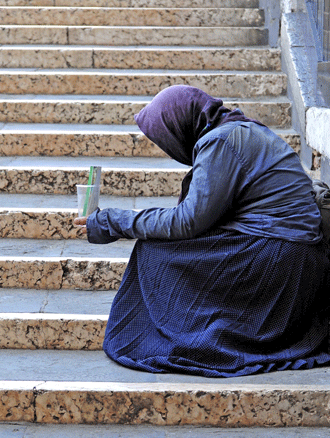December
Time to re-think what poverty means for Europe

A leading academic says EU policies are flawed because they rely on data that fails to accurately reflect poverty issues.?
Prof Mark Shucksmith, Newcastle University, is part of a team of academics who have devised what they believe is a fairer way of mapping the most significant areas of poverty and social exclusion across Europe.Currently, EU policy and funding is allocated based on overall GDP, but wealth can vary tremendously from region to region within the same country and also in relation to others.?? This new TiPSE (Territorial Indicators of Poverty and Social Exclusion in Europe) report is the first comprehensive and systematic attempt to match regional patterns of poverty and social exclusion* across Europe. ??
Prof Shucksmith will be speaking about the report and how he hopes it will inform future policy decisions at both EU and national levels at the ESPON Seminar in Rome today (4 December 2014).
“The current system is not a good way of redressing poverty,” he explains. “GDP per capita is not a good indicator. Even income is only one aspect – for example living costs vary substantially between and within countries and these needs to be reflected.”
To create the new map, they devised four domains to establish a clearer picture of social exclusion as an addition to existing poverty indicators:
- Earning a living – the labour market, earnings
- Access to basic services – healthcare, education, etc.
- Social environment – inclusiveness, discrimination etc.
- Political participation
“This report offers more reliable, relevant and mapable indicators in a balanced way so funds could be divided more fairly.
“Most countries currently invest money in the areas where they expect the most growth, rather than those that need it most,” he adds. “We see an imbalance between the South East and North East of England, for example, and similar tendencies occur in other countries.”
The existing measure of poverty across the EU looks at what percentage of the population has an income of below 60% of the national average. Regional and structural funds are focused on regions of low GDP per capita.
The Eurostat figures used to define this come from data classified from NUTS 0, for a whole country, to NUTS 1 and 2 for larger regions. The new classification, developed for the TiPSE report, is NUTS 3, offering a much ‘finer grain’ of detail as it shows the different aspects of poverty and social exclusion for smaller regions of Europe.
Part of this research resulted in a new classification of clusters of poverty and social exclusion indicators across Europe:
Cluster 1: Inclusive Centre – relatively positive (inclusive) performance across all aspects of poverty and social exclusion (Austria, Cyprus, Czech Republic, Germany, Luxembourg, Malta, Slovenia, Switzerland)
Cluster 2: Competitive North-West - particularly strong performance in relation to the labour market, with a higher proportion of the population born abroad and a larger number of single parents (Belgium, Denmark, Finland, France, Iceland, Ireland, Netherlands, Norway, Sweden, United Kingdom)
Cluster 3: Emerging East - higher material deprivation, low life expectancy and poor housing conditions combined with moderate labour market and education (Bulgaria, Estonia, Hungary, Latvia, Lithuania, Poland, Slovakia)
Cluster 4: Mediterranean Adjustment – distinctive for its relatively high rates of poverty and poor labour market conditions and ageing population (Greece, Italy, Portugal, Spain)
Cluster 5: Romania – an outlier in terms of poverty, labour market conditions, material deprivation, housing and education
The TiPSE project was coordinated by Nordregio, The Nordic Centre for Spatial Development in Sweden and the partners were University of Highlands and Islands (UK); Newcastle University (UK); Hungarian Academy of Sciences (Hungary); ILS - Research Institute for Regional and Urban Development (Germany); National Centre for Social Research (Greece); and James Hutton Institute (UK).
?
The TiPSE report, which was written by Andrew Copus, is the result of an Applied Research Project conducted within the framework of the ESPON 2013 Programme, partly financed by the European Regional Development Fund.
*Poverty is commonly defined in absolute or relative terms whereas social exclusion relates not only to income or physical well-being, but also to inclusion in various aspects of society such as the job market, institutions and democracy.
published on: 4 December 2014
